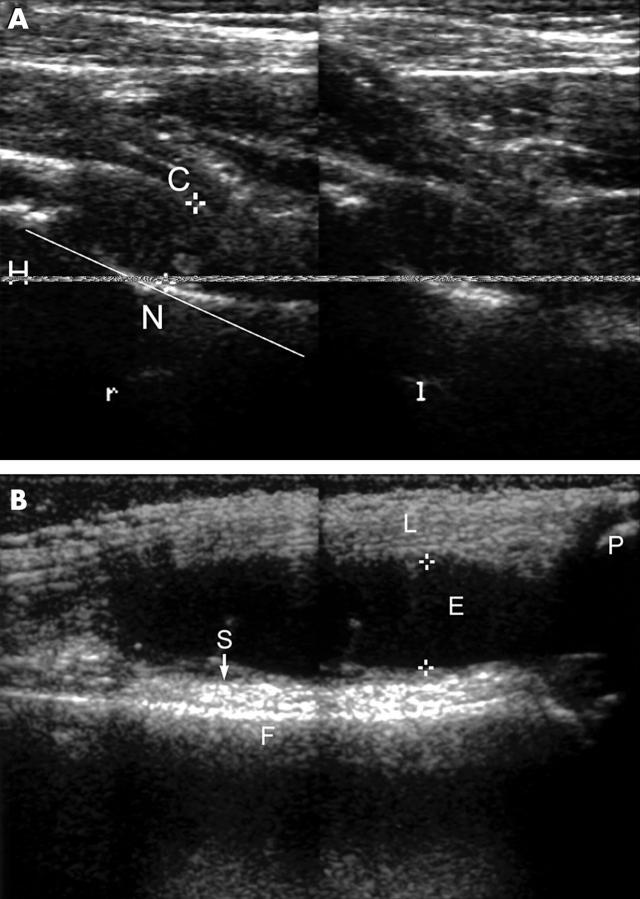Abstract
Methods: Twenty eight patients with JRA with active disease at entry in 15 hips and 38 knee joints were followed up three times in intervals of 4–6 weeks. Sonographic, clinical, and laboratory findings were documented at the same time in clinically active and inactive disease. As controls of the sonographic variables 10 children without a history of arthritis were examined by ultrasound.
Results: In active arthritis of the hip joint 19/31 (61%) examinations showed a pathological widening of the synovial joint space. There was no significant correlation between sonographic and clinical measures of disease activity in coxitis. Marked effusion within the suprapatellar pouch was seen in 87% and thickening of the synovial membrane in 92% of cases of active gonarthritis in patients with JRA. There was a significant difference in the number of patients with joint effusion and in the mean joint effusion between patients with clinically active gonarthritis at entry and inactive arthritis at follow up (p<0.001). In contrast, synovial thickening persisted in about 80% after induction of clinical remission.
Conclusion: The data confirm the high sensitivity of arthrosonography in imaging changes in hip and knee joints of patients with JRA. Sonographic effusion of the knee provided the highest correlation with measures of clinical disease activity. Further prospective studies should evaluate whether persistent thickening of the synovial membrane detected by ultrasound in clinically inactive arthritis indicates residual inflammatory activity and an increased risk of relapse.
Full Text
The Full Text of this article is available as a PDF (98.4 KB).
Figure 1.
Arthrosonography of the hip and knee joint. (A) Ultrasound of the hip joint in a ventral sagittal approach with the hip in extension, r = right and l = left side of the patient with active hip involvement in JRA. The scan shows the femoral head (H), the femoral neck (N), and the joint capsule (C). The distance between the femoral neck and the capsule is measured as the so-called synovial joint space (SJS). (B) Ultrasound of the knee joint in a ventral longitudinal scan of the suprapatellar pouch. Femur (F), patella (P), and the ligament (L) of the quadriceps are bordering the suprapatellar pouch. The joint effusion is measured in the largest anteroposterior diameter of the suprapatellar effusion (asterisks). In addition the maximum thickness of the synovial membrane (S) of the anterior wall is determined.



